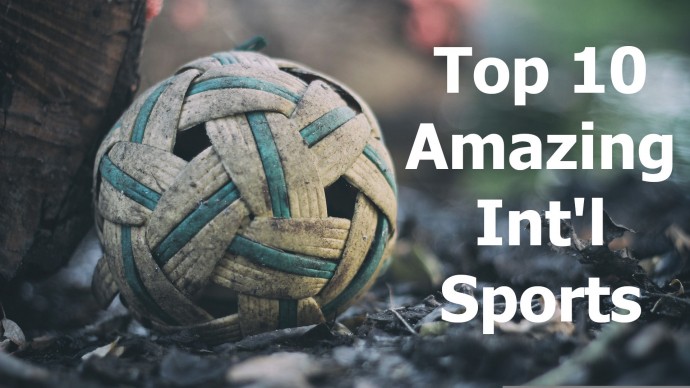
I admit, I’m not usually what you’d call a sports fan, or at least not in the way that anyone in North America might think of it. I don’t follow any specific teams, nor do I follow any major professional sports. I’ve never attended a single professional game of baseball, basketball, or hockey (I know, I’m a terrible Canadian).
On the other hand, certain “niche” sports have always been fascinating to me, for a number of reasons. Some are completely unique, some have a rich cultural back-story, some are incredibly fun to try, and some are just utterly bonkers, at least from a North American perspective. Today, let’s explore a few sports from around the world that you’ve probably never heard of, but that are all awesome in their own way.
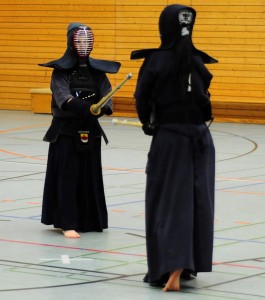
- Kendo (Japan)
Picking just one sport from Japan to focus on was a tough call, to say the least. As a nation isolated from the outside world for hundreds of years, Japan evolved a huge diversity of unique sports, and each one is cooler than the last. Everyone knows about Sumo, where two beefy boys in thongs try their best to slap and push each other out of a ring. That definitely gets an honorable mention, as do all of the major Japanese martial arts – Aikido, Judo and Karate being the most well-known. However, these only scratch the surface when it comes to Japanese martial arts, and so today let’s take a look at one that may have flown under your radar: Kendo.
Kendo is perhaps best described as “Japanese fencing”. Forget trying to score a touch with thin metal epee or foil though, because Japanese swords or katana aren’t really designed for stabbing, but rather, slicing. In Kendo, you don’t get a foil but rather a bamboo sword called a shinai, and the object is to basically whack your opponent with it, ideally without getting whacked yourself.
If this sounds painful, well, it can be, but the good news is that you get to wear a full suit of armor while doing this. The bad news is that this armor is incredibly thick, so be prepared to get sweaty if you’re trying it in the summer, which I did! Imagine trying to have a duel while wearing a full set of hockey gear.
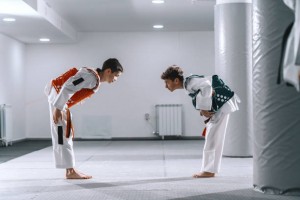
- Tae Kwon Do (Korea)
While we’re on the subject of martial arts, let’s take a look at one that you’ve probably heard of but that deserves a spot anyway, just for being cool as heck. Tae Kwon Do is the national sport of Korea, which you may have already known, but what may surprise you is that this has only been the case since 2018!
Based on a mix of Karate, Chinese martial arts and more traditional Korean martial arts, Tae Kwon Do is a fairly young sport, as it was only developed as recently as the 1940s and 1950s. With an emphasis on agility and lightning-fast kicks, it also incorporates blocks and punches, as well as a number of weapons including swords, escrima (short sticks), kama (sickles), and the long staff. Sparring or point fighting is also heavily emphasized.
After initially appearing as a demonstration sport in the 1988 Olympics, it later became a full medal sport in 2000. Over the years, many schools of Tae Kwon Do or “kwans” have branched off from the original five, and it has seen a rapid spread around the world, with at least 63 countries now sending competitors to the Olympics. I guess they figured hey, if Chuck Norris does it, it must be worth learning, right?
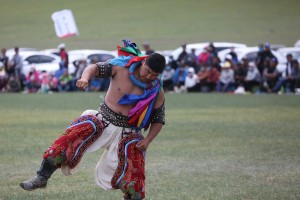
- Mongolian Wrestling / Archery (Mongolia)
More martial arts? Darn right, but it’s not because I’m biased as a martial artist, I promise! As it turns out, people just really like beating the stuffing out of each other – or at least pretending to, anyway. Next up we have a two-for-one, and it’s totally not because we had too many to fit into a Top-10 list. Mongolia simply offers so much that it was impossible to pick just one.
Mongolian Wrestling, also known as Bokh, has a tradition dating back hundreds if not thousands of years. As one of three essential “manly skills” in a very manly culture, you can probably understand why it’s a pretty big deal over there. Archery and horseback riding are the other two “manly skills”, in case you were wondering, and we’ll get to archery in just a bit.
There are many styles of Mongolian wrestling, but Bohk is the one with the most cultural significance, and every year Mongolia hosts a major tournament called the Naadam, with as many as 1000 competitors. Although is it known as Mongolian Wresting, competitors come from Russia and China to compete as well. The rules are fairly simple: touch the ground with anything other than your feet, and you’re out! Throws, trips and lifts are legal, but beyond that, you start to see a lot of regional variability. Finally, I would encourage you to go look up the outfits, because while I could simply tell you that they wrestle in briefs and leather boots, you’re definitely better off seeing it for yourself.
Archery in Mongolia, particularly from horseback, goes back a long way as well. Maybe you’ve heard of Genghis Khan? That was pretty much his thing. Today, the skill has remained a part of many important festivals such as the Naadam, and is practiced by both men and women. Using a recurve composite bow, archers aim for small targets called sur, stacked to form a wall, from up to 75 meters away. These bows have, however, been known to hit targets up to 500 meters away with great accuracy. I for one am relieved to know that the days of Mongol pillaging are well in the past.
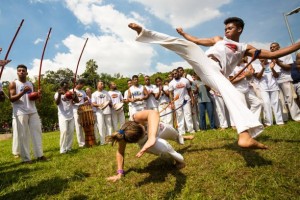
- Capoeira (Brazil)
Detecting a theme? Yup, it’s another martial art, but for this one we look to Brazil instead of Asia! Capoeira is also unique in that it incorporates elements of dance, music, and acrobatics, making it quite unlike any Asian martial art.
Born in the midst of the Brazilian slave trade at the beginning of the 16th century, it began as a means for fugitive slaves to defend themselves, while disguising the art as a dance. Although declared illegal in 1888, by then it had already taken root in the culture of Brazil, and saw a resurgence in the 1920s, once repression by the state began to decline. At that time, pioneering practitioners began to incorporate additional elements from Judo, Wrestling, and Jogo do Pau, a traditional Portuguese art based around fighting with a staff.
The Capoeira we see today is a blend of these many influences, with a focus on fighting at a disadvantage. Flexibility and agility are used to strike from every angle, dodge attacks, and maintain momentum. Every practice is like a performance, so it’s definitely worth checking out.
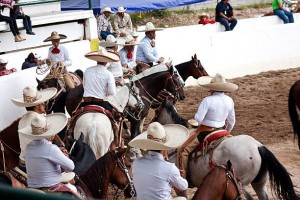
- Charreria (Mexico)
And now for something completely different! That’s right, from martial arts we’re moving on to what is best described as “Mexican rodeo”. Mexico has a long equestrian tradition dating back to the heciendas of colonial times, so much so that today’s Charreria have been designated as the national sport, deeply tied to the culture of the country.
In specially designed arenas, or lienzo charros, competing teams take part in a variety of events, most of which correspond to events you would see in a rodeo. Participants can be male or female (charros or charras, respectively), although women have the additional challenge of performing in petticoats, part of their traditional uniform. I don’t know about you, but I’m pretty sure I could barely manage to walk in a petticoat.
- Chilean Rodeo (Chile)
Not to be outdone, Chile developed its own form of rodeo, as did many South American countries with Spanish colonial backgrounds. Cattle ranching was (and in some cases, still is) a huge industry in countries like Argentina, Brazil, Chile, Paraguay, and Uruguay, so it’s rather unsurprising that each developed their own sporting events based on the associated skills.
As opposed to Mexican Charreria, in Chilean rodeo a team (collera) of two riders (huasos) primarily aim to stop a calf by pinning it against large cushions. Additionally, the arena (medialuna) is crescent-shaped, Chilean horses are used exclusively, and riders are expected to wear traditional huaso garb. Rodeo has become so popular in Chile that in fact it now attracts about as many spectators as soccer (or football, if you prefer).
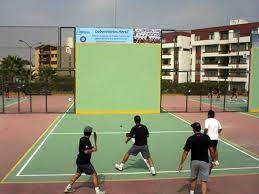
- Paleta Frontón / Peruvian Squash (Peru)
Now that we’ve covered martial arts and rodeo, let’s take a look at some sports that Westerners might find a bit more recognizable, in that they involve putting a ball into a goal of some kind. First in that category is Peru, with their own unique version of squash, called Paleta Frontón.
Unlike the squash you know, this is played on an open court, which is 12 meters long, 7.6 meters wide, and set against a 5-meter-high concrete wall. They play with rubber balls, much like in squash, but the paddles are typically supposed to be carved from Peruvian oak. Dating back only to 1945, this game is still gaining ground, but I’d definitely be keen to try it out!
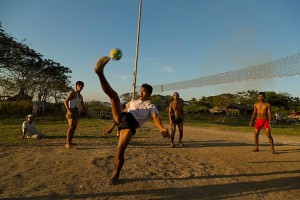
- Sepak Takraw (Indonesia and Malaysia)
Heading back to Asia, we find another game with some familiar elements and a few unique twists. Sepak Takraw is often described as “kick volleyball”, but I prefer to think of it as soccer and volleyball’s illegitimate love-child. To be fair, this game actually predates either, and is thought by many to be the inspiration for the game of soccer. Although it has a long history in Malaysia, it is thought to have been introduced from China originally, and some version of it was traditionally played in Brunei, Cambodia, Indonesia, Korea, Laos, Myanmar, the Philippines, Singapore, Thailand, Vietnam, and even Japan as well.
Basically, teams of two or four players compete on a court resembling a badminton court. Feet, knees, shoulders, chest and head can be used, much like in soccer, and a ball can only be touched 3 times at most by a side before it must be returned, as in volleyball. The point scoring and fault system would take 3 pages to explain fully, so suffice it to say that whoever gets to 21 points first is the winner of the set, and winning a match requires winning two sets out of three. This game sounds far too interesting not to try, especially since the ball is traditionally made of…wait for it…rattan.
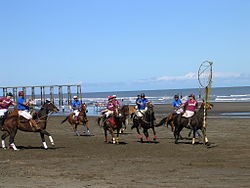
- Pato (Argentina)
So, you thought Argentina was content with merely rodeos and soccer? Think again, my friend! How about a game that combines…now hear me out…elements of basketball and polo? In Argentina, the answer to that question was “tell me more”, and the result was Pato, now the national sport of Argentina.
“Pato” means “duck game”, and this is because way back in the day…you guessed it, there was no ball. Just a duck. A live duck. No really, look it up. Originally played by gauchos, or Argentinian cowboys, a playing field was simply the space between two ranches, and the winner would be the first team to deliver the um, duck to their home ranch. The things we did before cable TV, I tell ya…
In the modern game, at least, there is a ball, and two four-member teams on horseback compete to score by throwing this ball through large vertical hoops. Apparently, a similar game is played in both France and Portugal, because shenanigans at high speed while on horseback…what could possibly go wrong!?
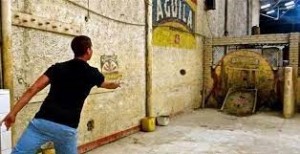
- Tejo (Colombia)
Last but certainly not least, we have a game that has probably answered the question “what could go wrong?” many, many times over. Tejo, hailing from Colombia, actually incorporates everything you could want in a sport – alcohol, throwing heavy objects, and explosives.
Said to have originated in Colombia around 500 years ago, this sport is so popular that it rivals soccer in Colombia, and is also played in neighboring Venezuela, Ecuador, and Panama. A little like shotput, players throw pucks (tejos) down an 18-meter board, toward a meter-wide target area. Inside the target area are small packets of explosives (mechas) that award points if detonated. Points can also be gained by landing the tejos inside or close to the target area, but let’s face it, explosions are obviously cooler.
Doesn’t it feel like America should have some sort of answer to this game? This selection tops our list by merit of its uniqueness, its strangeness, and how much it desperately makes us want to try it.
Have another sport in mind deserving of an honorable mention? Let us know on social media!
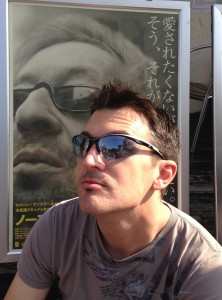 Lucas Laplante has taught English in Japan for a total of 11 years, mostly with the JET Programme. From 2005-2008 Luke was living and working in Beppu city and Oita city, Oita prefecture. Then, from 2013-2021, he worked in Miyakojima, Okinawa, and Kitakyushu, Fukuoka. During his time teaching in Japan Luke taught everyone from Kindergarten to retirees, in both the public and private school systems. He’s currently a Job Placement Advisor with Oxford Seminars.
Lucas Laplante has taught English in Japan for a total of 11 years, mostly with the JET Programme. From 2005-2008 Luke was living and working in Beppu city and Oita city, Oita prefecture. Then, from 2013-2021, he worked in Miyakojima, Okinawa, and Kitakyushu, Fukuoka. During his time teaching in Japan Luke taught everyone from Kindergarten to retirees, in both the public and private school systems. He’s currently a Job Placement Advisor with Oxford Seminars.



 Oxford Seminars Blog
Oxford Seminars Blog 